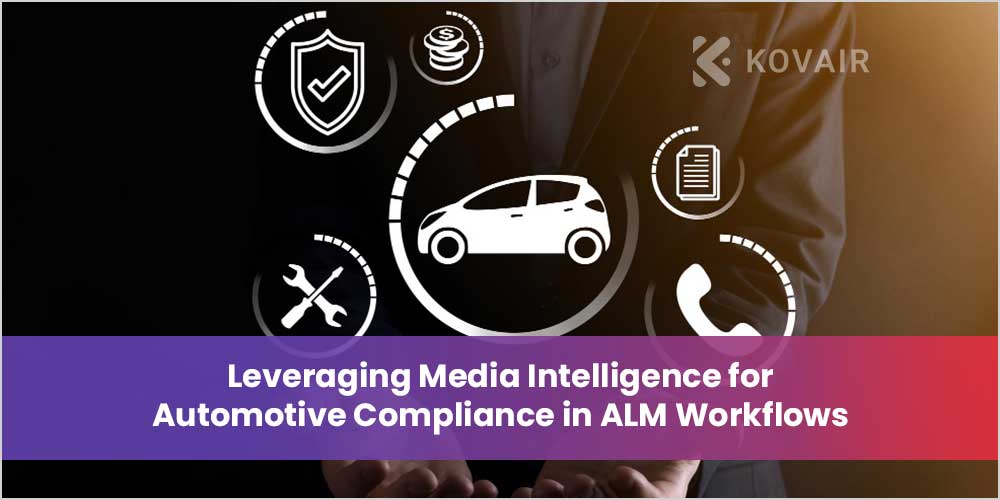
The car business is changing more than ever. Compliance has become a perennial concern with the emergence of electric mobility, autonomous driving, and global supply chains.
Strict standards, such as ISO 26262 for functional safety and ASPICE for process maturity, must be adhered to by manufacturers and suppliers. Meanwhile, they must address emerging regulations, customer demands and social scrutiny. Conventional Application Lifecycle Management (ALM) tools assist in the management of compliance requirements. Yet they tend to overlook one important thing: real-time external media signals.
What is Media Intelligence?
Media intelligence is the act of tracking and analyzing data from various sources. These may be regulatory announcements, industry publications, and international news media. State-of-the-art systems are able to recognize important participants, perform sentiment analysis, and send real-time notifications. In terms of automotive compliance, it would allow teams to respond promptly to a new rule, safety issue, or industry development reported.
Why Media Awareness is needed in Automotive Compliance
The compliance of automotive is complicated because the regulations vary in different regions. What is required in Europe might not be similar to that required in North America or Asia.
Meanwhile, reputational risks are great. Negative media coverage can lead to a recall or a safety incident in hours. This may lead to inquiries, litigation, or even new regulations. Through the integration of media intelligence and ALM, organizations can be able to see these external factors. They can react quickly and intercept changes in their compliance processes.
The adoption of Media Intelligence into ALM Workflows.
In modern ALM tools like Kovair ALM, requirements management, traceability and workflow automation are already available. These capabilities are improved by adding media intelligence.
For example:
- A compliance requirement can be created as a result of a regulatory alert.
- A risk assessment workflow may be initiated by a negative supplier report.
- A new safety guideline may be connected with related design and testing artifacts.
This makes sure that external developments are not only observed but also responded to in a systematic and auditable manner.
Situation: Regulatory Update in Practice.
Take an example of an automotive supplier that is creating electronic control units. A regulator in Europe declares new cybersecurity requirements.
The news is detected by a media intelligence system and an alert is issued. The ALM platform establishes a requirement associated with the project in question. The engineers are given assignments to evaluate the effect, revise design reports, and create new test cases.
When the regulation comes into effect, the company will have already dealt with the change. Audit records demonstrate a full trail- starting with the first media alert to the last verification.
Situation: Supplier Risk Monitoring.
The other instance is supply chain management. Imagine one of the major suppliers is involved in negative publicity concerning product safety.
The alert is fed into the ALM tool with an integrated system. A risk management workflow is initiated automatically. The compliance and engineering teams will be able to promptly look at the problem, evaluate risks, and make decisions about corrective measures. This will minimize wastage of time, prevent expensive surprises and save brand reputation.
Benefits of Integration
ALM and media intelligence together have several benefits:
- Compliance (anticipatory compliance) by detecting regulations early.
- Better tracking of external events to internal processes.
- Quick reaction to audits or inspections.
- Fewer suppliers or reputational risk.
- Better cooperation between compliance, engineering, and quality teams.
Implementation Considerations
This approach should be planned. Companies have to determine how to relate external alerts to ALM. The process may be simplified with the help of integration platforms such as Kovair Omnibus.
Filtering is also critical. Not all media reports are pertinent. Rules that are set by teams should be centered on regulatory, compliance and safety updates. Lastly, workflows are to be designed in such a way that noise is minimized. It is aimed at providing actionable alerts to the appropriate individuals without overloading them.
Measuring Success
Organizations can measure the impact by monitoring important metrics. They can be the period between a regulatory announcement and the creation of a requirement, enhancements in audit readiness, and decreases in compliance-related delays. The efficiency of compliance is not the only evidence of the strategic value of media-driven workflows.
Conclusion
The automotive industry is no longer concerned with compliance merely as a response to regulations. It is increasingly regarded as an expectation from stakeholders and consumers. Through a combination of SOCMINT (Social Media Intelligence), media intelligence, and ALM processes, organizations are able to identify risks in time, react proactively, and maintain full traceability. This integration transforms compliance from a reactive liability into a competitive strength—both in meeting regulatory demands and enhancing brand image.
